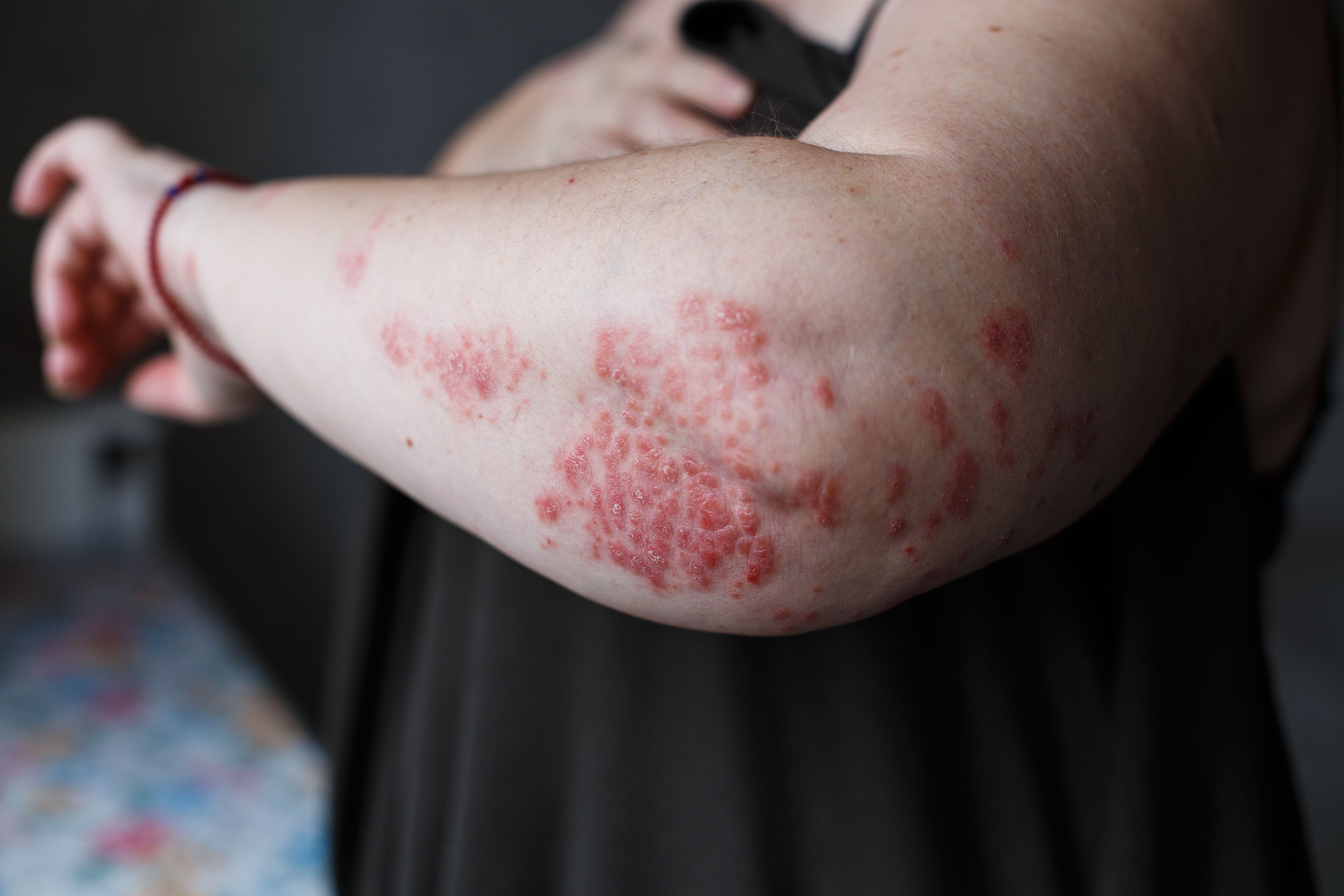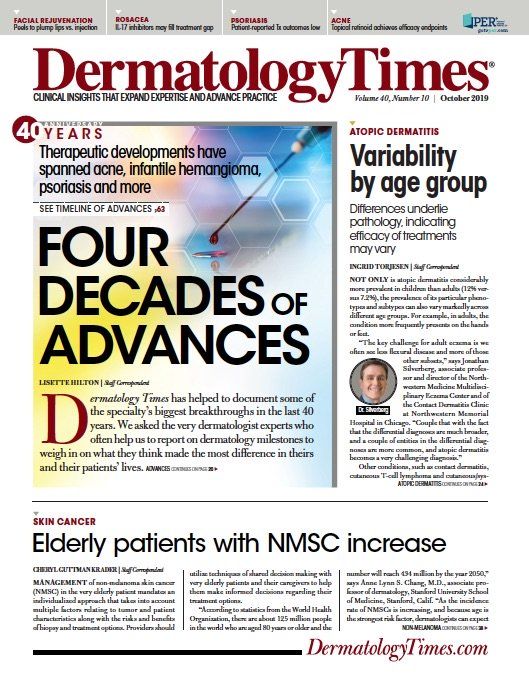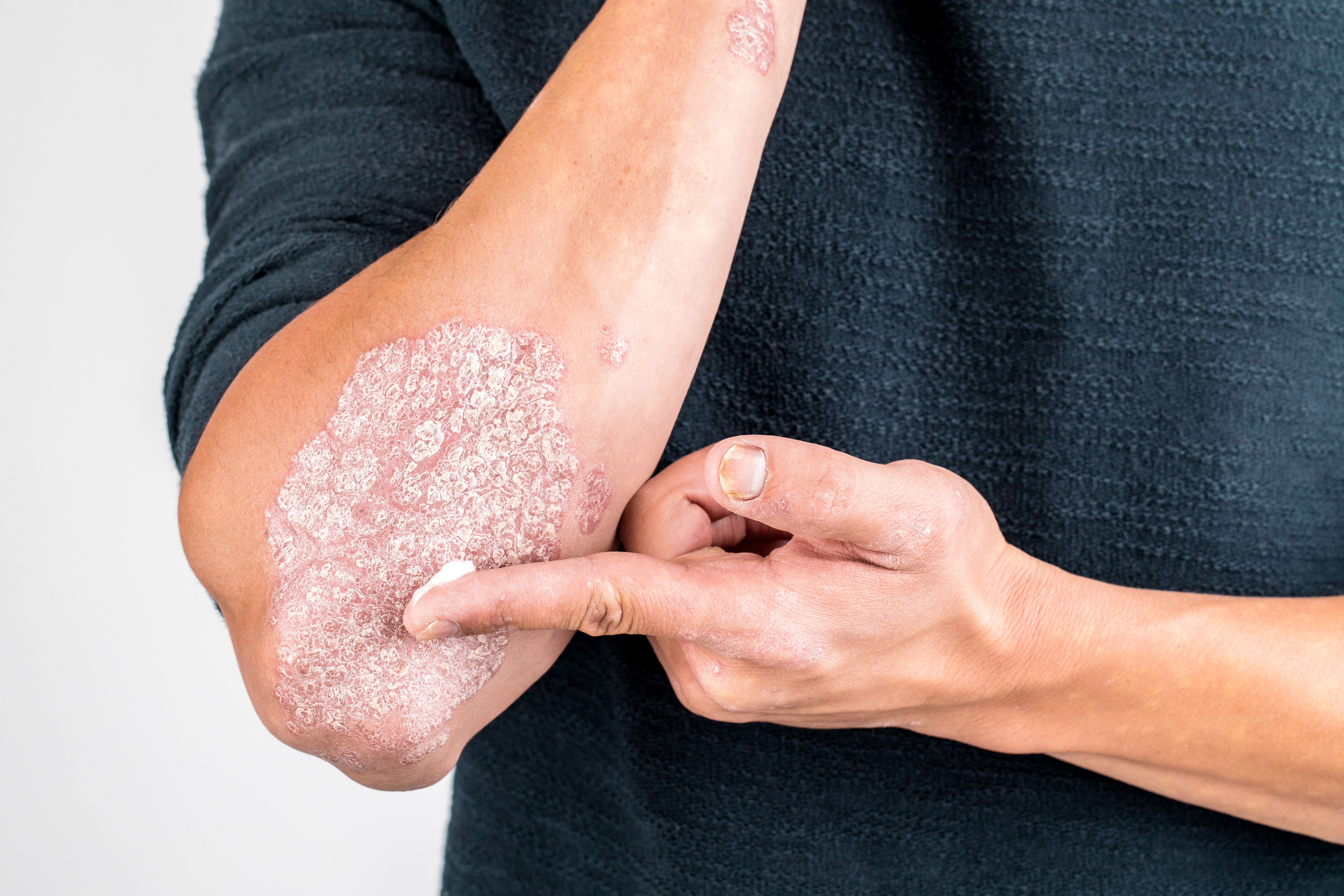- Case-Based Roundtable
- General Dermatology
- Eczema
- Chronic Hand Eczema
- Alopecia
- Aesthetics
- Vitiligo
- COVID-19
- Actinic Keratosis
- Precision Medicine and Biologics
- Rare Disease
- Wound Care
- Rosacea
- Psoriasis
- Psoriatic Arthritis
- Atopic Dermatitis
- Melasma
- NP and PA
- Skin Cancer
- Hidradenitis Suppurativa
- Drug Watch
- Pigmentary Disorders
- Acne
- Pediatric Dermatology
- Practice Management
- Prurigo Nodularis
- Buy-and-Bill
Publication
Article
Dermatology Times
Patient satisfaction in psoriasis
Author(s):
There are more treatment options for psoriasis patients than ever before, so why do patient reported outcomes still suggest failure to meet patient expectations? Experts from the International Psoriasis Council (IPC) highlight factors that could be causing the perceived disparity between psoriasis treatment and patient satisfaction.
Are your psoriasis patients satisfied with their current treatment? (Ольга_Тернавская - stock.adobe.com)

Several novel medications have been approved by the U.S. Food and Drug Administration (FDA) for the treatment of psoriasis in the past 20 years. While these therapies have ushered in an era of improved disease control, patient-reported outcomes still suggest failure to meet treatment goals.
Experts from the International Psoriasis Council (IPC) discussed the goals of psoriasis treatment and barriers to receiving optimal care during a day-long roundtable. Their conclusions were published in Dermatology Therapeutics in March.1
The authors speculated that there may be several factors causing the perceived disparity between treatment capabilities and patient satisfaction, including:
1. Patient-perceived improvement. Physicians use validated objective measures of treatment efficacy such as PASI scores; however, these measures differ with patient-perceived improvement. For example, “some patients have found itch to be most bothersome, while dermatologists reported the location and size of the skin lesions as paramount.”
2. The mild-to-moderate patient population. Another factor is that new therapies tend to focus on advanced disease.
“Part of the problem is that the majority of recent innovation has been targeted to the moderate-to-severe patient population, with little new successful development for those psoriasis patients with mild and moderate disease,” the authors write.
3. Differing treatment goals. The authors also note that patients may have higher goals than their physicians, citing the results of a Japanese study where physician-patient misalignment was present in nearly 70% of surveys conducted.2
Furthermore, the authors state, “many patients are unaware that there is a possibility of attaining 100% clearance over both the short-term and long-term,” and that “this finding again highlights the importance of dermatologists recognizing patient expectations in order to reach clinical goals.”
4. Disease burden on family members. Psoriasis can have a widespread impact on a patient’s relationships with others.
The authors state, “the impact of psoriasis extends beyond the patient. Disease burden on family members and partners has garnered little attention in the past and, due to this lack of consideration, is a hidden and often ignored important aspect of the disease.”
5. Overtreatment vs undertreatment. With the current medication advancements in psoriasis therapies, sustained remission is a strong possibility. Once patients reach remission, deciding whether to continue treatment can become a serious physician-patient dilemma. This may contribute to poor patient satisfaction, as overtreatment can lead to complications associated with immunosuppression, and undertreatment can lead to increased morbidity from psoriasis.
6. Delayed referral to a specialist. The authors quoted a study, which suggests that patients may not seek expert opinion soon enough.3
“Delay in seeking help can be attributed to several barriers, including familial experience of the disease (acceptance that many family members have psoriasis); previous failed therapies and thus a sense of hopelessness; lack of follow-up to assess treatment response after initiation; and difficulty in obtaining a secondary care referral,” the authors write.
Conclusions
While the main goal of psoriasis treatment is to restore the patient’s normal daily activities, the authors note that patient-reported outcomes may complement objective skin scores and improve patient satisfaction. They suggest using the widely-accepted Dermatology Life Quality Index (DLQI) as a patient reported outcome.
The International Dermatology Outcome Measures Group is working to establish a validated patient-reported outcome based on the DLQI that is psoriasis specific. The combination of a tool with objective measures and patient-reported outcomes that is psoriasis specific will enhance physician-patient communication and improve outcomes.
Additionally, experts agree that using treat-to-target strategies is the first step to improve patient satisfaction. Using this approach will help physician-patient communication and establish treatment goals. The authors note, however, that using treat-to-target strategies may be difficult to implement on a global scale.
A “feasible approach” needs to be developed to help achieve treatment goals and patient satisfaction, the authors conclude. Ultimately, patient education and improved physician-patient communication must be improved to advance psoriasis care and remission maintenance.
References:
1 Strober BE, van der Walt JM, Armstrong AW, et al. Clinical Goals and Barriers to Effective Psoriasis Care. Dermatol Ther (Heidelb). 2019;9(1):5-18.
2 Okubo Y, Tsuruta D, Tang AC, et al. Analysis of treatment goal alignment between Japanese psoriasis patients and their paired treating physicians. J Eur Acad Dermatol Venereol. 2018;32(4):606-614.
3 Simpson JK, Wilson M, Ahmed AA, Mizara A, Clarke A, Mcbride SR. An exploratory study using framework analysis to investigate health-seeking behaviour in patients with psoriasis. Br J Dermatol. 2017;177(3):742-750.







